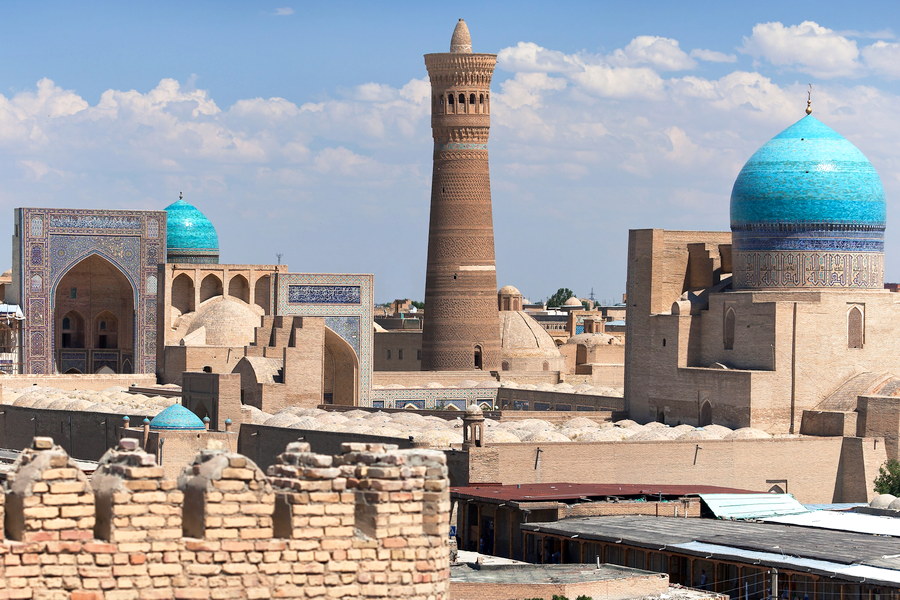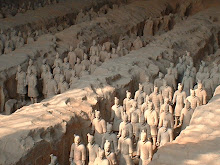2007年11月27日星期二
Ελληνική Δημοκρατία hellenic repubblic
Greece, officially the Hellenic Republic is a country in Southeastern Europe, situated on the southern end of the Balkan Peninsula . Greece lies at the juncture of Europe, Asia, and Africa. It is heir to the heritages of classical Greece, the Byzantine Empire, and nearly four centuries of Ottoman rule.Regarded as the cradle of western civilization and the birthplace of democracy, Western philosophy, the Olympic Games, western literature, political science, major scientific principles and drama including both tragedy and comedy, Greece has a particularly long and eventful history and a cultural heritage considerably influential in Northern Africa and the Middle East, and fundamentally formative for the culture of Europe and what may be called the West. The shores of Greece's Aegean Sea saw the emergence of the first advanced civilizations in Europe. Minoan and Mycenean civilizations, and later Greek city-states, emerged across the Greek peninsula but also on the shores of Black Sea, South Italy and Asia Minor, reaching great levels of prosperity that resulted in an unprecedented cultural boom, expressed in architecture, tragedy, drama, science and philosophy, and nurtured in Athens under a democratic environment. Athens and Sparta led the way in repelling the Persian Empire in a series of battles. Both were later overshadowed by Thebes and eventually Macedonia, with the latter under the guidance of Alexander the Great uniting and leading the Greek world to victory over the Persians, to presage the Hellenistic era, itself brought only partially to a close two centuries later with the establishment of Roman rule over Greek lands in 146 BC. The subsequent mixture of Roman and Hellenic culture took form in the establishment of the Eastern Roman Empire in 330 AD around Constantinople, and remained a major cultural and military force for the next 1,123 years until its fall at the hands of Ottomans in 1453. On the eve of the Ottoman era the Greek intelligentsia migrated to Western Europe, playing a significant role in the Western European Renaissance through the transferring of works by Ancient Greeks to Western Europe. Nevertheless, the Ottoman millet system contributed to the ethnic cohesion of Orthodox Greeks by segregating the various peoples within the Ottoman Empire based on religion as the latter played an an integral role in the formation of modern Greek identity.through the Greek War of Independence, successfully fought against the Ottoman Empire from 1821 to 1829, the nascent Greek state was finally recognized under the London Protocol. Greek culture evolved over several thousand years, with its earliest known civilization being in the Mycenean and Minoan era, continuing into Classical Greece, the birth of the Hellenistic era and through the influence of the Roman Empire and its Greek Eastern successor the Byzantine Empire. The Ottoman Empire also had a significant influence on Greek culture, but the Greek war of independence is credited for the revitalization Greece and establishing a single [once again] sovereign single entity (though notably smaller), of its multi-faceted culture throughout the ages.
The Greeks invented athleti contests and held them in honour of their gods. The Isthmos game were stagedevery two years at the Isthmos of Corinth. The Pythian games took place every four years near Delphi. But the most famous games were those at Olympia, a town in south- western Greece. These took place every four years. The ancient Olympics seem to have begun in the early 700 BC, in honour of Zeus. No women were allowed to watch the games. Pottery dating from around 550 BC shows men taking part in the games naked or wearing only a thong.
· The Acropolis of Athens is the best known acropolis (high city, The "Sacred Rock) in Greece. Although there are many other acropolises in Greece, the significance of the Acropolis of Athens is such that it is commonly known as The Acropolis without qualification. The Acropolis is a flat-topped rock which rises 150 m (512 ft) above sea level in the city of Athens, Greece. It was also known as Cecropia, after the legendary serpent-man, Kekrops or Cecrops, the first Athenian king.the
· Parthenon is a temple of the Greek goddess Athena, built in the 5th century BC on the acropolis of Athens. It is the most famous surviving building of ancient Greece, and has been praised as the finest achievement of Greek architecture. Its decorative sculptures are considered one of the high points of Greek art. The Parthenon is an enduring symbol of ancient Greece and of Athenian democracy, and is regarded as one of the world's greatest cultural monuments.The name of the Parthenon likely derives from the monumental cult statue of Athena Parthenos housed in the eastern room of the building. This statue was sculpted in ivory and gold by Phidias. Athena's epithet parthenos refers to the goddess's unmarried and virginal status.The Parthenon replaced an older temple of Athena that had been destroyed by the Persians in 480 BC. Like most Greek temples, the Parthenon was used as a treasury, and for a time served as the treasury of the Delian League, which later became the Athenian Empire.In the sixth century AD, the Parthenon was converted into a Christian church dedicated to the Virgin. After the Turkish conquest, it was converted into a mosque. In 1687, a Turkish ammunition dump inside the building was ignited by Venetian bombardment. The resulting explosion severely damaged the Parthenon and its sculptures. In 1806 AD, Lord Elgin removed some of the surviving sculptures and took them to England. These sculptures, now known as the Elgin Marbles or Parthenon Marbles, are on display in the British Museum. An ongoing dispute concerns whether the Elgin Marbles should be returned to Greece.The Parthenon, along with the other buildings on the Acropolis, is now one of the most visited archaeological sites in Greece. The Greek Ministry of Culture is currently carrying out a program of restoration and reconstruction.
订阅:
博文评论 (Atom)




































没有评论:
发表评论